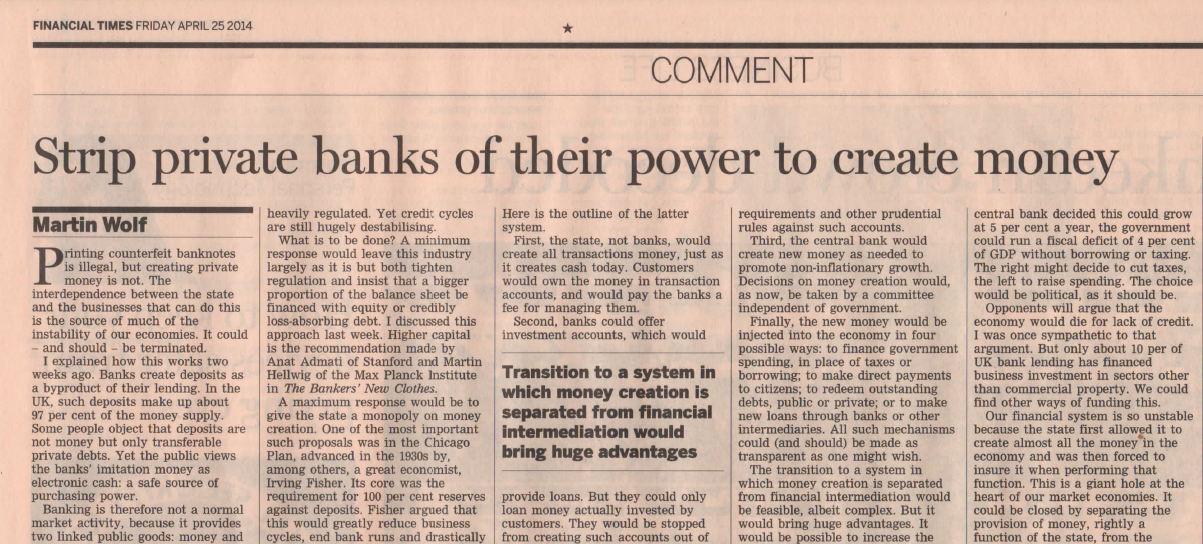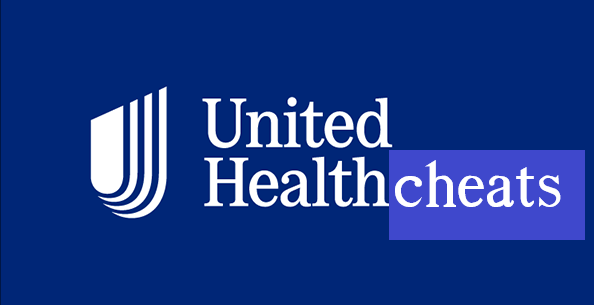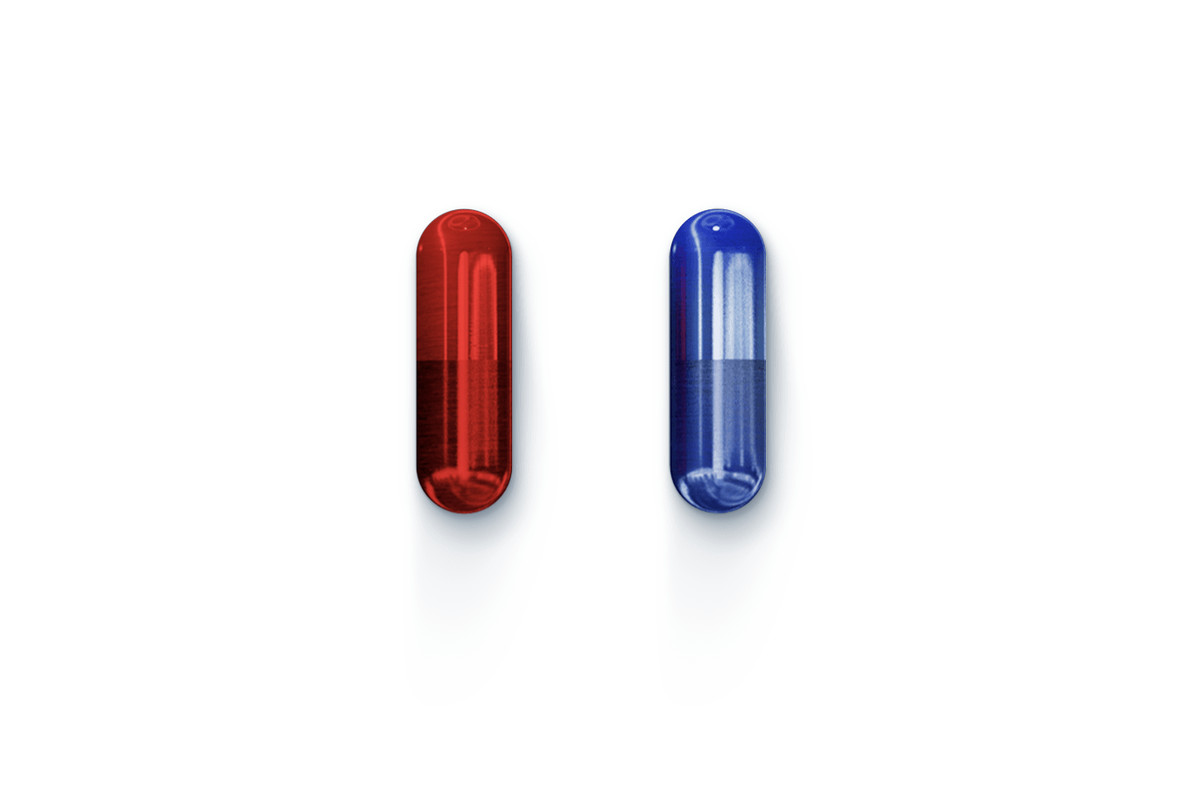Introduction to the Green Party's Banking and Monetary Reform Committee
by Steve Showen, GPFL
Introduction to the Green Party's Banking and Monetary Reform Committee (BMRC)
Welcome to the BMRC,
Thank you for your interest in the Banking and Monetary Reform Committee of the Green Party.
By way of introducing ourselves and our mission to you, the BMRC would like you to know that our work is based on our study of the history of money as power. That is because we have learned that whoever controls the money is the predominating influence in the political economy, nationally and across the globe, as the money power is currently networked. We have learned that when the money is created by the sovereign for free, which in our nation is supposed to be We the People, then people, peace and planet may prosper. When private interests usurp that prerogative and create the money for their own private gain, and lend it to us at interest, it's at the expense of people, peace and planet.
Unfortunately, we are currently in the latter circumstance. Instead of our government issuing its own sovereign "public money" at no cost, as people believe happens now, our government actually borrows "private money," thus incurring indebtedness and surrendering its sovereignty to these private forces. Such a money creation system is a purposeful scheme to increase the power of the already powerful. What is needed is money created for the public good, created by the sovereign public, and at no cost — Sovereign public debt-free U.S. government money.
The diverse social, political, economic and environmental injustices that the Green Party concerns itself with can be understood as repercussions of our privatized monetary system, wherein the money is created as a form of debt to private interests. This sets up conditions for centralized social and political control, societal debt entrapment, environmental destruction, climate calamity, and endless warfare. These destructive excesses inherent to Capitalism as we know it can be largely attributed to this virtually secret private money mechanism, impelling an incessant quest for more. The money power behind these seemingly unrelated issues is the private banking cartel, whose money we rent, Capital.
Consequently, the mission of the BMRC is to let everyone in on this secret cancer eating at our body politic, and that there is an antidote, which history tells us is sovereign public money created for the common good. From the Greek Pelanors to the English Tally sticks, sovereign money has been associated with peaceful prosperous societies. In colonial times, Americans' practical experience in sovereign money created great prosperity, in defiance of the English King's private bank money. This conflict was a prime cause of the revolution, which was funded and won with American debt-free Continentals. The Founding Fathers then codified their understanding into the Constitution, Article 1, Section 8: "Powers of Congress: … to provide for the common Defence and general Welfare of the United States; … To coin Money, regulate the Value thereof, … "
But even at that, the founders hadn't won the monetary war against the banks, who persisted in loaning their private money at interest. It was President Lincoln who again demonstrated the value of sovereign public money by issuing debt-free Greenbacks, and spending them into the economy for salaries, supplies, and production essential to the North's victory in the civil war. Unfortunately, because Lincoln did not end the banks' power to create money, his paper Greenbacks were an ingenious, but brief victory for the people. The private banking cartel put the final nail in the coffin with the Federal Reserve Act of 1913, enshrining into law the privatization of our monetary system, as unconstitutional as that surely is.
This means our entire money supply is all borrowed money. When the government borrows by selling bonds to the public, that is money that originated with a loan to somebody. If all the loans were paid off, there'd be no money. The fact that the banks haven't created the interest due on their loans presents an insatiable requirement for more money to be lent to maintain the money supply and pay the interest, as loans are paid off. This bankers' demand of constant growth to maintain its private system has caused a vast number of our citizens to become debt slaves, has fostered perpetual war, and ravaged our environment. The accumulation of private bank profits from interest on the money supply over the last century has resulted in financial institutions collectively owning controlling shares in most of the largest corporations, and their sharing interlocking directorates. Obviously our political system is the handmaid of the money power as well. Because the money power has presided over and advanced an unsustainable economy, which has resulted in vast wealth inequality and jeopardized our habitable climate, we are facing an existential crisis.
Presenting the much needed antidote in the U.S. is the National Emergency Employment Defense Act which was introduced into Congress by Dennis Kucinich in 2011. The NEED Act returns the money power back to the people, reaffirming the Constitution. The Green Party has adopted this proposal into a platform plank, known as Greening the Dollar. The NEED Act effectively recreates and permanently installs modern day Greenbacks as the exclusive legal tender of the land, and provides for spending them into the economy for the general welfare. The NEED Act resulted from a collaboration of scholars from the American Monetary Institute, Congressmen Dennis Kucinich and John Conyers, Greens and others. Another companion monetary reform group in the U.S. is Alliance for Just Money. There are other advocates of sovereign money worldwide, whose scholars have recognized the best chance for possible futures is for accountable governments to issue money directly, not to borrow it by selling bonds, and to end banks' special money creation privilege altogether.
The BMRC appreciates that should we experience another bank caused depression, local currencies could play a vital role in our survival, as history has demonstrated both in the U.S. and abroad. We also recognize their vulnerability to demise at the hands of the private money power, again as history has witnessed. We understand the long term sustainable solution to be a national one, sovereign public debt-free U.S. government money.
The BMRC encourages new members to become familiar with this history as a basis for your participation with us in fulfilling our mission. Stephen Zarlenga's The Lost Science of Money – the Mythology of Money, the Story of Power is a foundational work. We suggest getting acquainted with Zarlenga's work by reading chapter 17 about Lincoln's Greenbacks.
Our mission is to find ways to convey this vital information to Greens and the public, to show the causative relationship between the private money power and the particular issues Greens are engaged with, and to show how re-establishing public sovereign money would be a major step towards resolving our global crises, and creating a just and sustainable world. Learn more about our work and other resources on our website Greens for Monetary Reform. We publish a monthly newsletter with articles delving into such related topics as the machinations of the Fed, crypto currencies, public banking, local currencies, the debt ceiling myth, the history of money, and book reviews.
Here follows additional useful information for your participation on the BMRC.
Sincerely, the members of BMRC.

United Health Care: WHY IS IT #8 ON THE FORTUNE GLOBAL 500?
by Eugene Woloszyn, GPCT
Health care super-profits are driven by Medicare/Medicaid coverage, taxes, and rigging the system. Follow the money to United Health Care, a Minnesota company founded in 1974 that has exploded in size through using 26 banks to create an empire with very corrupt practices. With $257 Billion in revenues, it becomes the 8th largest GLOBAL company on Fortune Magazine's Global 500 released days ago. CVS Health comes in at #7. On the Fortune 500 list of only US companies, there are 4 out of 10 in health care. The hidden history of this company shows why corruption is an integral part of great successes.
In 2009-10, the company lobbied heavily to ensure Obamacare would be friendly to its interests and not allow Medicare For All, nor a public option health plan to compete with the for profit plans. In February 2012, United healthcare bought XL Health, a sponsor of Medicare Advantage health plans as described in the adjacent article. The primary focus of XL Heath was Medicare recipients with special needs such as those with chronic illnesses and those eligible for Medicaid. In 2011, a company executive turned whistleblower filed suit under the False Claims Act that the company "boosted risk adjusted scores" of patients in Medicare Advantage plans to defraud BILLIONS OF DOLLARS from Medicare. The federal government joined this case, but the company has stalled a settlement since 2011. Wikipedia describes how the company has been convicted of underpaying doctors, unjustly denying treatment, and many other crimes. A federal judge in Florida, who was in remission from cancer, called the company "immoral and barbaric". He recused from judging a case in 2019 because his opinion of the company prevented him from being impartial.
In 2006, the company's CEO and chairman William McGuire was forced to resign after Wall Street Journal stories resulted in a federal investigation of executive stock option corruption. In 2005, McGuire maneuvered the Board to pay him $60 million to $125 million in complicated deals. After he resigned, he got a record breaking golden parachute of $1.1 billion. For the first time in history, the US Securities and Exchange Commission (SEC) used its "clawback" provision to force him to repay $466 million for the stock option crimes, But he didn't go to jail. Another White Collar crook walks away free with at least $700 million.
These bank financed robber barons use taxpayer funds for gigantic enrichment, while jeopardizing the future of essential institutions like Medicare.
This is a key factor in health care inflation hammering elderly people and taxpayers. Business propagandists want you to believe that government is incompetent. Don't fall for those lies. Government agencies are under constant siege from corrupt corporations trying to cheat, undermine, and capture the agency regulations for greedy purposes. United Healthcare's rapid growth was financed by banker money given to these insider speculators.
We need debt-free Sovereign Money to finance local productive jobs and infrastructure needs, not speculative financing creating bubbles.

PART 7 THE MONEY MATRIX: Medicine 1930-1960 (Foundations Use
Police Power of State)
By Sue Peters, GPNY
Introduction
"When a commercial bank makes a loan contract with a borrower, the bank CREATES the deposit in the borrower's account." Have you repeated this fact 15,000 times yet? Private banks CREATE what we use as money. This 'money power' can also be called Finance Capitalism or Wall Street, or just the Banks. Those who control this 'money power,' have influenced powerfully our entire society. This article will focus specifically on the control of the medical profession.
This control of the banks by wealthy elites goes back to the end of the 19th century, when financial-industrial cartels, (1) run by names like J.P. Morgan, John D. Rockefeller, Andrew Carnegie, etc., used the 'money power' to take over the American economy. These financiers created tax-exempt foundations to shield their wealth from taxes but, more importantly, to allow it to grow and grow.
What We Learned in Part 6 of Money Matrix Series
Wealthy capitalists funded the germ theory of disease and "scientific" medicine. They did not want to bring attention to the unhealthy effects of their huge industrial systems.
The teaching of "scientific" medicine required more money that the local wealthy could give: lab buildings, teaching hospital and clinic, equipment, full-time lab teachers and researchers, clinical faculty. Therefore, the tax-exempt foundations, Carnegie and Rockefeller stepped in. From 1910-1930s the foundations gave an unprecedented $300 million for medical education/research.
Financial Capitalism: The Best of All Business is a Legal State Monopoly.
The robber barons wanted to keep their wealth, power, and control. They knew their best protection was to "get state protection for your industry through compliant politicians and government regulation... a legal monopoly always leads to wealth." (2) In other words, make the many work for the few — "the best of all business is politics." (3)
"In modern America the most significant illustration of society as a whole working for the few is the 1913 Federal Reserve Act. The Federal Reserve System is, in effect, a private banking monopoly … with legal monopoly control over money supply …" (4) " … This robber baron schema is also, under different labels, the socialist plan. The difference between a corporate state monopoly and a socialist state monopoly is essentially only the identify of the group controlling the power structure. … Success for the Rockefeller gambit has depended particularly upon focusing public attention upon largely irrelevant and superficial historical creations, such as the myth of a struggle between capitalists and communists, and careful cultivation of political forces by big business."(5)
The Great Depression and World War II: the Principle of Federal Economic Intervention Firmly Established
Up to World War II, the tax-exempt foundations were the leading force in medical center, technological medicine. "By 1940 the Rockefeller philanthropies alone had contributed more than $161 million to medical education and medical research." (6) After the war, the federal spigots opened.
The Great Depression and the New Deal are huge subjects, but the following observations support the political power of powerful 'philanthropic' foundations and corporations during this period.
"... the swashbuckling administration of Franklin D. Roosevelt, with all its war cries against 'the money-changers in the temple,' "(7) did nothing to change the control of the money system, the private Federal Reserve. He had an opportunity to return the power to create money to the U.S. Treasury and did not use it.(8) "Roosevelt, addicted as he is to verbal castigation of the wealthy, was supported in 1932 and again in 1936 by some of the richest families of the country."(9)
As to World War II, this writer refers the reader to Edwin Black's incredibly researched IBM AND THE HOLOCAUST: The Strategic Alliance Between Nazi Germany and America's Most Powerful Corporation: "It tells the story of IBM's conscious involvement—directly and through its subsidiaries—in the Holocaust, as well as its involvement in the Nazi war machine that murdered millions of others throughout Europe."(10)
In other words, the wealthy and corporate class continued to maintain control of the government and the direction of the medical system.
After World War II: Federal Government Opens Its Spigots to the Medical Cartel
"Like the foundations and individual capitalists earlier in the century, federal health research has focused on the narrowly technical components of disease and death rather than on the broader economic and physical environments so central to the population's health status."(11)
The 1946 Hill-Burton Act began the entrance of the federal government as a principal funder in the nation's health care system, providing for hospital construction and modernization. In the 1950's Congress approved construction grants and traineeships for medical schools.
The Rockefeller Foundation had begun the grant model of research support. After 1945, the federal government became the major funder of research grants. "Grants given in 1953 by the Rockefeller medical and natural sciences divisions amounted to around $9.2 million; that year, the NIH gave more than $22 million to extramural medical research. By 1959, the NIH figure reached $156 millions."(12)
In 1965, Congress passed Medicare and Medicaid. Between 1965 and 1974, hospital expenditures tripled. "Medical technology is estimated to account for half the increase in costs of hospital care..."(13)
This focus on medical technology has more and more replaced personal caring and emotional support in the doctor-patient relationships.
Conclusion
In 1967, one-half of 1% (0.5%) of the corporate class owned one-fifth (20%) of all the nation's wealth, including half the net worth of all bonds and corporate stock.(14) In 1976, the top eight foundations (which included Rockefeller) "held an average of $948 million in assets while three-fourths held less than $5 million each...."(15)
Corporate socialism was indeed alive and well in the country. Huge concentrations of power could be found in the financial capitalists, the ones who controlled the Wall Street banks.
Notes:







